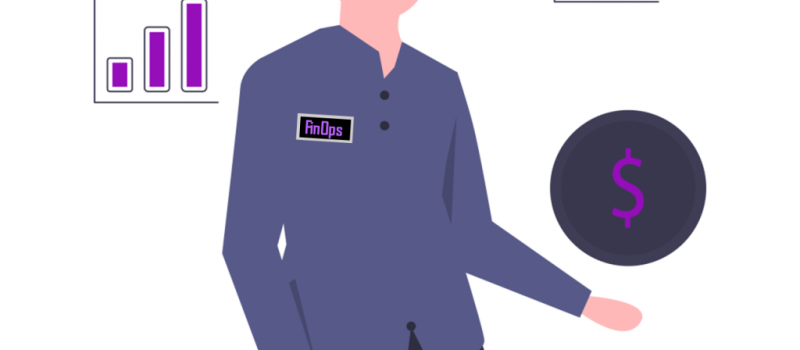
How to deal with unused cloud resources
veröffentlicht am 05.04.2022 von Alex Baier
Discover how to tackle the challenge of unused cloud resources and reduce cloud costs in your organization. Learn the essential steps to gain transparency, assign responsibility, and establish efficient reporting, all while following the principles of the FinOps framework. Unleash the potential of automation and interdisciplinary collaboration to enhance your cloud environment.
The source of unused cloud resources
Since some years now, I dedicate my professional career to a topic called FinOps (formerly known as Cloud Cost Management). FinOps is a combination of systems, best practices, and culture that increases an organization’s ability to understand cloud costs and make trade-offs. The most interesting part for me with FinOps is the interdisciplinary between many different departments at companies and I understand my role as an advisor and translator, who helps to explain the impacts of Cloud to various stakeholders in various departments.
Through the years, I had the chance to review many cloud environments at different companies in different industries, and early on, I started to see a pattern, which is driving the cloud spend and consequently the cloud costs. As soon as it comes to interdisciplinary Cloud projects, the responsibility becomes fuzzy and the ownership of the cloud resources is unclear. Once this circumstance occurs, cloud costs sharply increase and the cloud environment becomes inefficient. In “The State of FinOps Report” the FinOps Foundation identified in their survey this as a main challenge for organizations, and it seems that most organizations are aware that unused resources face a huge challenge.

As we all know, “A fault confessed is half redressed”, we need now to find the remedy for the unused cloud resources challenge. The next chapter will go now more in detail on how to address the challenge.
An easy approach to tackle unused cloud resources
The first step to a more efficient cloud environment is by getting back transparency about your cloud infrastructure. This step is crucial and cannot be skipped, because, without transparency, you will operate in blind flight, and finding unused resources will become a tremendous effort. If your cloud environment is growing, or you are using multiple cloud providers, I always recommend specialized cloud cost management tools, for example, Cloudability from Apptio as it gives you more insights, allows automation, and supports multi-cloud environments as well.
As soon as the transparency is back, it´s about time to define responsibility for your cloud resources. This is also a principle of the FinOps Foundation framework and aims to have fixed contact persons for the individual cloud resources. These contact persons are then in charge of terminating the unused resources.
Dedicated FinOps principle: “Everyone takes ownership for their cloud usage”
Step 3 is now to establish a suitable reporting for unused resources, which allows the cloud resources owners to have easy access to this information. The key is to make the reporting as easy as possible and automate as much as possible. Here, a third-party cloud cost management tool will support you easily on the reporting and prepares the necessary data through dashboards or reports. Furthermore, you get near real-time reporting, which is key in a dynamic cloud environment. A nice side effect could also be that the owners will start proactively to pull information about their environment and enjoy the impact of deleting unused resources.
Dedicated FinOps principle: “Reports should be accessible and timely”
In the next step, it’s about time to get a process, as it is not a one-time task. Here the FinOps Foundation designed three iterative phases – Inform, Optimize and Operate. For more information, please visit the link to the FinOps Foundation webpage.

We always try to encourage the cloud resources owner to go through all three phases during a two weeks sprint to ensure the iteration loop. In the beginning, I support them with every step and set up the foundation, thus they will not be thrown in at the deep end. With more experience and good base work in the first loops, the time effort will minimize, and the benefits will increase, true to the motto: Crawl, Walk, Run.
Conclusion
This blog post should give you a first idea of how to address the problem of unused resources, and it's hopefully a call of action for you. There is a great potential behind unused resources to optimize your cloud environment and to run your workloads more efficiently. As soon as you gain more experience to detect and terminate unused resources, I encourage you to think about automation. This will ease and support the whole process tremendously. Furthermore, I would like to give the advice to train all involved team members (Engineers, Finance, PO etc.) in the basics of FinOps. It has a huge impact, and it will foster good interdisciplinary collaboration. Last but not least, the quick summary of the four steps approach to reducing your unused cloud resources.
- Get transparency about your cloud environment
- Define responsibilities for your cloud resources
- Establish a suitable reporting
- Determine a process with the three iterative phases – Inform, Optimize, Operate
For further questions, discussions, or feedback, feel free to contact me!
Sources:
- The FinOps Foundation: The State of FinOps 2021
- The FinOps Foundation: FinOps Phases
“The first rule of any technology used in a business is that automation applied to an efficient operation will magnify the efficiency. The second is that automation applied to an inefficient operation will magnify the inefficiency.”
Bill Gates